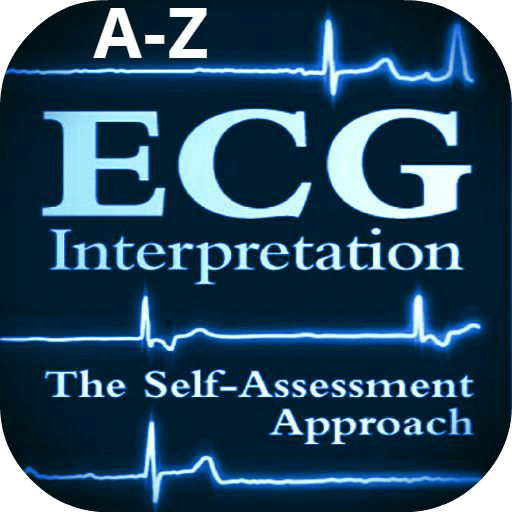
Learning the art of ECG interpretation requires intellect, commitment, effort and — perhaps most importantly — an organized approach. ECG Interpretation A - Z Approach
ECGs Made Easy?
I imagine it is understood that learning all of ECG interpretation is going to take more than 10 minutes of your time and that it is not quite so easy. To be proficient, it will take a bit of effort. Some memorization and pattern recognition will be required. The more you see, the more you will remember. Having a pair of calipers is helpful.
Step 1. Learn the Basics of a 12-lead ECG Tracing
First things first. Knowing the basic parts of an ECG tracing will lay a good foundation for everything else that is to come. The different waves, complexes and intervals need to be ingrained in your brain. How many seconds is a full ECG tracing? How much time does each big box and each little box represent?
This is not the time to learn the crazy things such as the different P-wave morphologies that occur with atrial enlargements and ectopic atrial rhythms — but rather, just to know what the normal P wave looks like and what it represents. It’s a similar concept for the other parts of the ECG.
Read ECG Basics.
Step 2. Determine Heart Rate on the ECG
To determine whether bradycardia, a normal heart rate or tachycardia is present requires the knowledge to calculate the heart rate on the ECG. Remember to apply these techniques to both the atrial rate, measured by the rate of the P wave, and the ventricular rate, measured by the rate of the QRS complex.
Read Determining Rate.
Step 3. Determine Axis on the ECG
The axis on the ECG can give a clue to many different pathologic states. Unless you are going into electrophysiology as a career, the only axis that you need to measure is that of the QRS complex.
Be sure to know the causes of left axis deviation, right axis deviation and when the axis is indeterminate (northwestern). Also, know the quick shortcuts to determine the axis.
Read Determining Axis.
Step 4. Learn Abnormal Heart Rhythms
Learning a normal sinus rhythm was taken care of in Step 1. Now, learn the below rhythms like the back of your hand. Be sure to review multiple examples of each in the individual ECG Reviews and Criteria sections below.
Atrial Fibrillation ECG
Atrial Flutter ECG
Atrioventricular Nodal Reentrant Tachycardia (AVNRT) ECG
Atrioventricular Reentrant Tachycardia (AVRT) ECG
Ectopic Atrial Rhythms ECG
First-Degree Atrioventricular (AV) Block ECG
Idioventricular Rhythms ECG
Junctional Rhythms ECG
Multifocal Atrial Tachycardia (MAT) ECG
Second-Degree Atrioventricular (AV) Block Type I (Wenkebach) ECG
Second-Degree Atrioventricular (AV) Block Type II ECG
Sinus Arrhythmia ECG
Sinus Bradycardia ECG
Sinus Tachycardia ECG
Third-Degree Atrioventricular (AV) Block ECG
Ventricular Tachycardia (VT) ECG
Wandering Atrial Pacemaker (WAP) ECG
Step 5. Learn Chamber Hypertrophies and Bundle Blocks
Sometimes this can be the most difficult part. Atrial enlargements are not too bad, but the criteria for left ventricular hypertrophy can drive you crazy. No need to memorize then all, just the main two or three.
Left and right bundle branch are not too bad, either. The “bunny ears” are easy to spot in right bundle branch blocks — though not always present. Don’t forget to learn what a non-specific interventricular conduction delay looks like, as well.
Step 6. Learn Acute MI and Ischemic ECG Findings
Step 7. Learn the Everything Else Including Atypical ECG Findings
Step 8. Review ECGs in Real Patient Case Scenarios
Step 9. Teach Others How to Read an ECG
The Practice of Medicine – Never Stop Learning